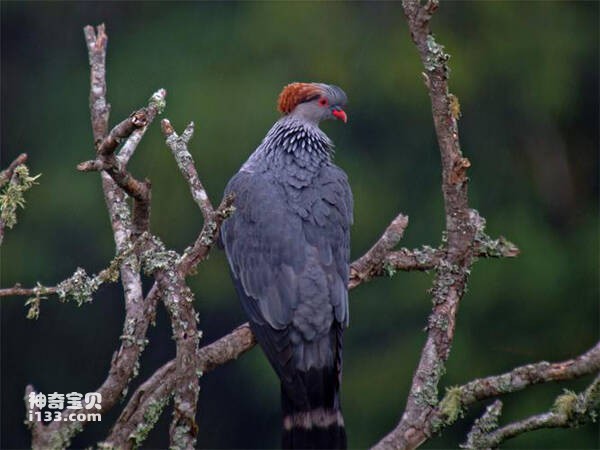Lopholaimus antarcticus
IUCN
LCBasic Information
Scientific classification
- name:Lopholaimus antarcticus
- Scientific Name:Lopholaimus antarcticus,Topknot Pigeon
- Outline:Landfowl
- Family:
Vital signs
- length:About 45 cm
- Weight:475-600g
- lifetime:No textual research information is available
Feature
Named for the "bun" on its head, it is one of the largest kuku
Distribution and Habitat
Found in Australia and New Zealand, its range covers the entire east coast of the Australian continent, from Cape York to the highlands of New South Wales, slightly overlapping to the foothills of the mountains. Further south in Victoria and Tasmania, this species likes to roam. Some local experts have observed them further north in eastern Queensland.
It inhabits closed tropical rainforests and wet woodlands filled with trees and plants, mainly in sunny river valleys, but also in palm forests, eucalyptus forests, FIG forests and other woodlands, arboreal, mainly in the canopy, between and on top of the branches and leaves of tall trees, rarely venturing to the ground and bushes.
Appearance
The doves can be up to 45 cm long and weigh 475-600 grams. With a large body and a relatively developed tail, it is one of the largest kuku. Shaped like a dove, the forehead feathers are slender and form a loop at the back of the neck. The feathers on the back of the crown are elongated to form a second crest and fall on the back of the neck and neck, and the reddish-brown crest protruding from this distinctive gray head resembles a woman's bun. The sexes are similar, but the female's crest is smaller and lighter. It is also named for its "bun" on the head.
The beak is reddish-brown, the eyes are red, the wings are dark gray, the chest is light gray, the tail is black, the head has a crown like a bun, the crown is reddish-brown, and there are wavy feathers between the crown and the back feathers. Although not as colorful as the tropical fruit dove, this species is very recognizable.
The head, neck, and the rest of the lower body are gray, with spear-like feath
Details
The turtle's scientific name is Lopholaimus antarcticus The Topknot Pigeon is one of the largest fruit doves.

Knot doves are very sociable, almost always in groups of three or five, and even form a large group of activities that can accommodate more than 200. Flying and foraging together. Rarely moving on the ground, they often move quickly in small steps, searching for food while walking, swinging their heads back and forth. The wings flutter frequently in flight, straight and fast. Sometimes they also glide, especially when flying from trees to the ground. They are not only large, they are very agile, and they can fly very well. Fast and direct in flight. They travel long distances in search of food. They also migrate from high altitudes to human resting places for food. This type of behavior is defined by experts as non-seasonal migration.
Knot doves eat a variety of fruits and berries with diameters from 5 to 25 mm. It mainly comes from the fruits of camphoraceae, Moraceae, rutaceae, myrtle family and palm family. Most are native plants. These birds are very active, often hanging upside down from tree branches to peck at food. They also flap their wings to catch falling fruit.

The peak breeding period is during the local spring and early summer, which lasts for a considerable period of time, with eggs in the nest seen in June, August, October, November and December. Most nests are located at great heights in trees, between 15-30 meters above the ground, although some may be placed quite low, less than 3 meters. The nest measured 25 cm in diameter and 5-7 cm in wall thickness. Some of them look a little fragile, too. In nature, each litter lays 2 eggs, both parents incubate for 22 to 24 days, the chicks weigh about 20 grams, and leave the nest for about 17 days to take off. At 14 days of age, the wings fully emerge, including the top bulge of the head, for up to 21 days, and its weight reaches about 280 grams. Around the age of 100 days, subadult birds undergo moulting and become as perfect as adult birds.
According to the Handbook of the Birds of the World, the bun dove is not a globally endangered species. Although the numbers are much smaller and lower than before the arrival of Europeans, the species is still abundant in New South Wales, Australia, including Cape York in Queensland. The population in New South Wales is 70,000 individuals. The habitat was severely damaged by the arrival of new settlers. It's gradually leading to a decline in the population. Fortunately, this practice has now been banned.
Listed on the International Union for Conservation of Nature (IUCN) 2013 Red List of Threatened Species ver 3.1 - Low Risk (LC).
Protect wild animals and eliminate wild meat.
Maintaining ecological balance is everyone's responsibility!








